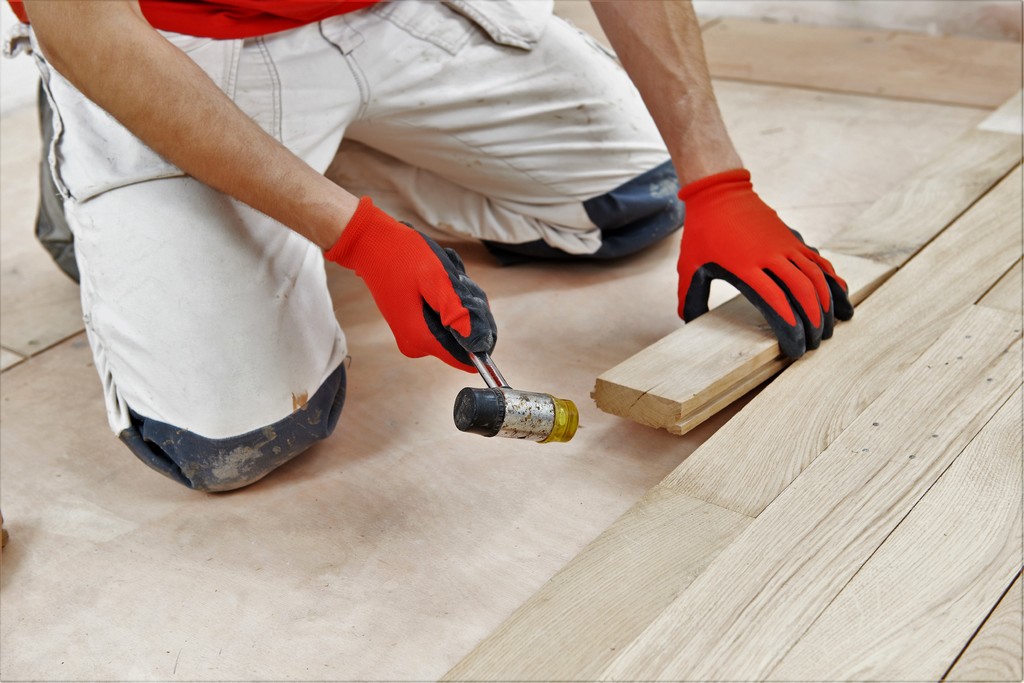1 Strip vs 3 Strip Engineered Wood Flooring

When it comes to hardwood people are presented with a lot of choices. Oak or walnut, prime or rustic grade, solid or engineered? If you have settled on having engineered wood flooring you are now presented with another choice. Should you go for one or for three stripped engineered flooring? This is not a simple question to answer because the difference is not so much about the overall quality and performance, since both share similar properties. No, this is more about the visual appeal and the overall feel they provide. Let’s take a look at each and see what really sets them apart from each other before settling on a decision.
The Number of Strips and Sanding
One of the drawbacks of engineered flooring compared to solid wood is the refinishing issue. Solid wood can be sanded and re-coated multiple times, while engineered - only a few. It is worth noting that the refinishing process depends entirely on the veneer’s thickness, but the number of strips has no influence on this whatsoever.
One Strip Engineered Wood Floors
Engineered floors are made out of multiple hardwood layers - base, core and wear, glued together. The top plank, also known as veneer, determines how many strips the floor has. One strip of flooring has a surface layer made from a single piece of wood with consistent features and grain. If you seek an engineered floor that closely resembles solid wood, then one-strip flooring is the perfect choice for you.
Three Strip Engineered Wood Flooring
Three-strip floors consist of a veneer made from multiple smaller cuts of wood. This style is specifically designed to imitate parquet blocks. The problem is that usually the parquet is laid in some form of pattern like herringbone, where the blocks face different directions. In comparison, the pieces in three-strip engineered floors all face the same direction, which can ruin the illusion for the trained eye.
Engineered floors, in general, produce little waste because, unlike solid hardwood, the planks are smaller and few are found unusable. Since three-strip flooring is meant to resemble parquet, a style where many little pieces form a pattern, that efficiency is raised even more. If you look for a bit more environmentally-friendly solution, get yourself such a floor. Every piece of wood could be one saved tree!
Which One Is the Better Option?
The veneer of an engineered floor is first glued to a plywood core, then sanded, stained and finished. The three-strip surface is made from several pieces of wood, which are so closely put together that in combination with the finish on top, it is impossible for any dirt to build up between them. Regular floors often have gaps between the floorboards,s which will appear relatively often due to the temperature changes. These gaps can be difficult to clean and having a three-strip engineered floor can make the whole process much easier for you.
Less dirt sounds great, doesn’t it? Unfortunately, this won’t prevent the joints between the planks from accumulating dirt over time. There is a little more space between them and no finish to keep the dirt away. Eventually, this will lead to a disparity between the cuts glued to single plywood and the joints between the planks. After a few months, the result will be visible even to an untrained eye and this will make your engineered floor look cheap and non-uniform.
One strip of the engineered floor will get dirt between each plank but it will be spread out more or less evenly, without looking strange and out of place. One of the big advantages of such a surface is the fact it resembles solid wood while also being much less expensive. If you, on the other hand, want to save yourself some of the headaches which complete and thorough cleaning often demands of us, then three-strip engineered surfaces are the way to go.